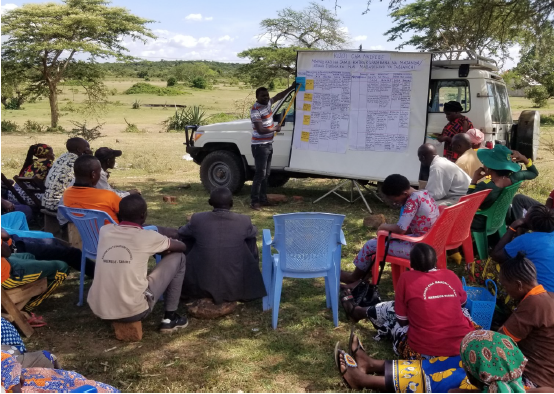Stakeholders Meeting about Agribusiness Market Opportunities for Youth Employment

On the 29th of February, the meeting for the agro-economic development for Tanzanian Youth in Morogoro took place. The host of this event was the organization Sustainable Agriculture Tanzania (SAT), that had invited farmers and guests from different stakeholders.At the beginning there was a short introduction to the project “Opportunities for Youth Employment (OYE)”, through which Tanzanian Youth is taught the basics of organic agriculture and business administration, in order for them to later be able to implement their own business ideas or to have better opportunities in the local job market. SAT here serves as a co-operation partner of Netherlands Development Organization SNV and carries out the formation of young people in organic-sustainable cultivation methods.With the objective of enabling them to later put into practice their own small business model, the participants of the event were thereupon taught the main features of business management. In doing so, an emphasis was placed on the first steps not to be connected to large investments that therefore depend on loans. Instead, it should be undertaken without the employment of capital. In this regard, already developed plans of action and strategies were presented, which can easily be put into practice by small-scale farmers.

Subsequently, SAT’s Marketing officer went into the production of organic foods and explained the advantages of certified organic products on the emerging market in Tanzania to the attendees. To cite a successful example, he named the Organic Shop of SAT in Morogoro, which exclusively offers fresh, organic goods and thus, as a recipient, guarantees the small-scale farmers a secure income. Other plans and strategies, like the formation of a large central market for organic produce, generate further incentives to persuade farmer groups to convert their production methods into organic.In the afternoon, the attendees were presented a very descriptive, successful model about the origins of a small-scale enterprise, which sells dried fruit and now supplies the coastal metropolis of Dar es Salaam. The young founder of the small business advised the farmers to start off as small as possible, firstly, in order not to get into debt, and secondly, in order to grow collaterally to experience. Everything is possible, he says, one only has to dare taking the first step and to jump at the opportunity.The success story of the mountain farmer Pius Paulini from Towelo was the splendid end of the event. Presenting his story himself, Mr. Paulini told the attendees about the advantages of organic agriculture and about how his life and the circumstances of his village changed for the better. He now sends his children to good schools, owns two motorcycles and has started building his very own house, all thanks to organic cultivation methods.Finally, the director of SAT, Janet Maro, shortly addressed the possibilities again, that have been gathered throughout the day and wished all the participants of the event the best of luck and a lot of success in undertaking the first steps towards the realization of their own business ideas, before all were released into the early evening.
Statements of participants:

Sara Gidion (Dakawa)“We learned about the economic foundation for the realization of our own business ideas. I now know what I have to consider in order to set up my own business. The presentations helped me to gain understanding of sales and profit. I would like to start my own production of soap that I can sell later.”

Hassani A. Husseni (Luhindo)“Today I have learned a lot about organic agriculture and the importance of the economy. I was shown the challenges and the requirements for a business of my own and what kind of planning lies behind. If I know all of this beforehand, I can be successful. I just graduated from school and now feel prepared for the infamous first step.”







